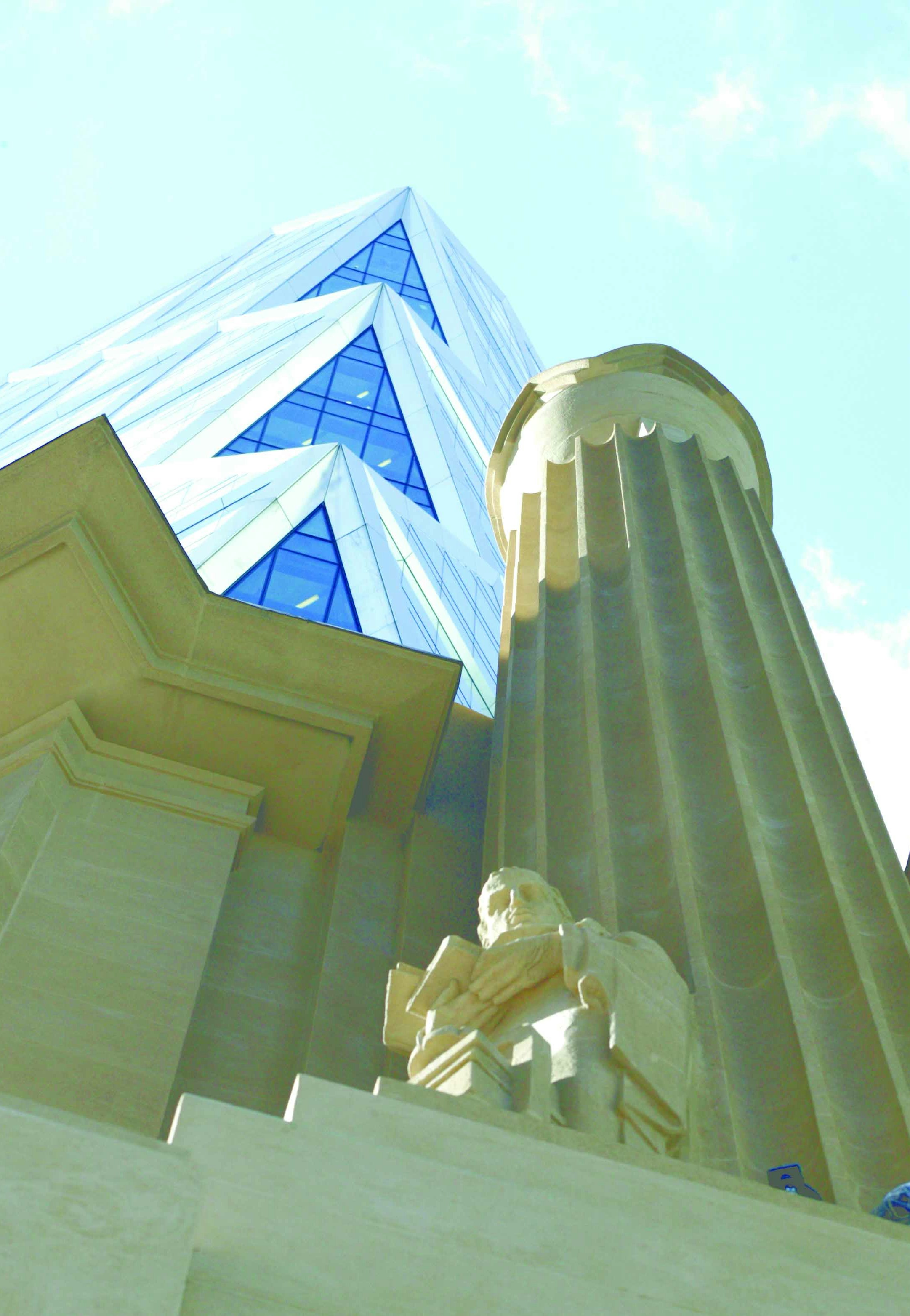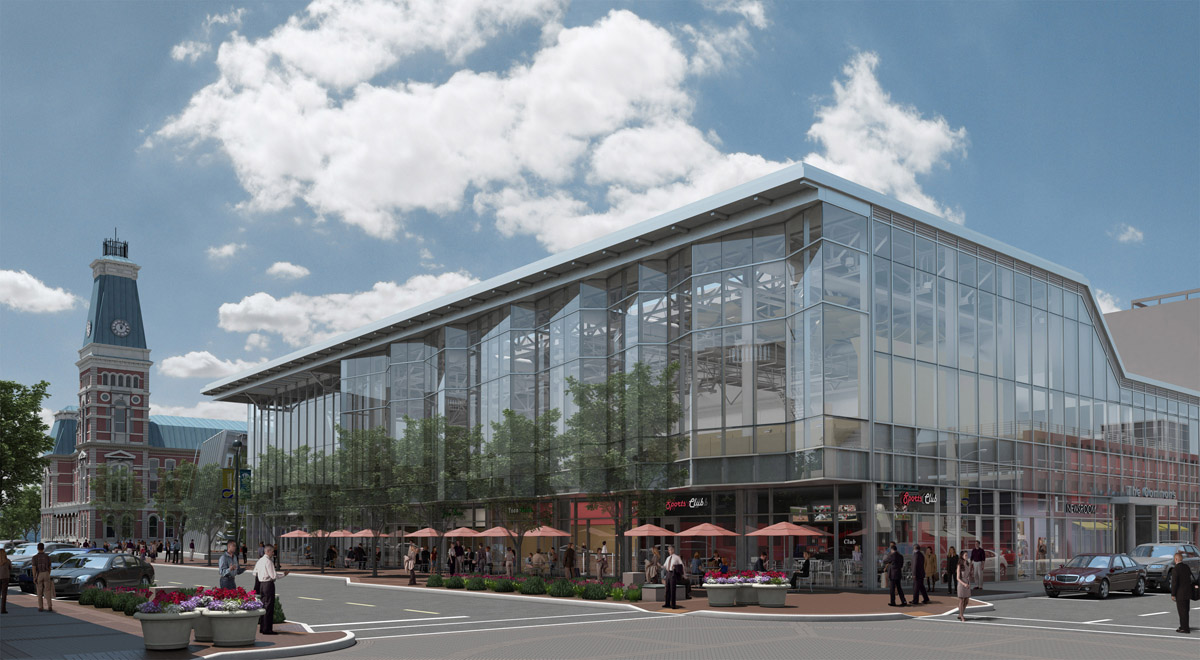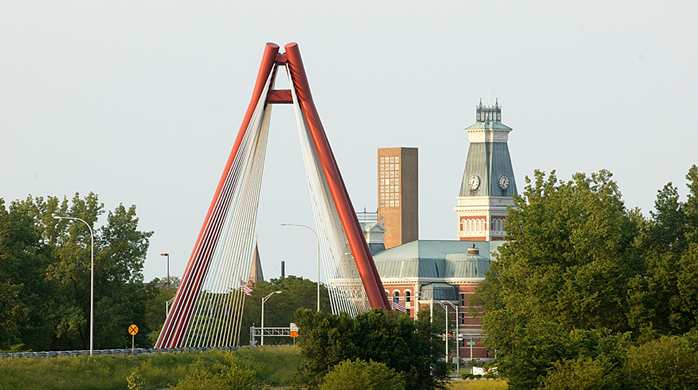Resilient Cities and the Community Stakeholder Leadership Model: How a City Influenced Today’s ‘Meta-Companies’

Who will you meet?
Cities are innovating, companies are pivoting, and start-ups are growing. Like you, every urban practitioner has a remarkable story of insight and challenge from the past year.
Meet these peers and discuss the future of cities in the new Meeting of the Minds Executive Cohort Program. Replace boring virtual summits with facilitated, online, small-group discussions where you can make real connections with extraordinary, like-minded people.
Companies are giving their employees a voice, and it’s paying off.
Profit margins, market shares, and survival rates almost always improve for companies that treat their employees as stakeholders with a seat at the table, helping inform or maybe influence meaningful change.

The new Hearst Corporate Tower in New York City blends the former, historic headquarters building of the company with the new, highly sustainable high rise tower in Midtown, a product of extensive stakeholder input among management, employees, suppliers and the local community.
They are sometimes called ‘meta-companies’ for their ability to foresee and adapt to change, at the same time engaging their employees in the process of change.
It’s all about resiliency, responding to changes quickly and effectively. The same holds true for cities that provide ways for their citizenry to be heard and to have impact.
In my book Enterprise City: How Companies Are Changing the Global Urban Landscape, contributing author Peter J. Miscovich of Jones Lang LaSalle cites the critical importance of the vox populi in guiding continuous change.
“Gaining public consensus is important to cities, and also to corporations, many of them experimenting with structures as ‘meta-companies’ in which employees are given a strong voice and choice in change management processes,” Miscovich writes.
He cites a McKinsey study supporting the point. It quotes late Boston Mayor Thomas Menino: “Get everyone engaged. Listen to the neighborhoods. The story of change is not about the mayor, it is about the engagement.”
“When communities are engaged in their places of work, and play an active role choosing their own work locations and patterns, the whole city is made stronger.”
Inclusive, transparent and engaging approaches like Menino’s in Boston are examples of the community stakeholder leadership model, which had a compelling genesis.
It saved both a rust-belt city from economic ruin and a multinational corporation from extinction, simultaneously.
It’s the case of Columbus, Indiana, shortly after World War II.
The city’s main employer, Cummins Diesel, faced an outmigration of qualified workers due, in part, to the decay of the public schools there. Cummins also faced a competitive business challenge and was losing sales and global market share. There were layoffs.
The company’s founder and chairman, J. Irwin Miller, stepped back and took a holistic view of the entire community. Rather than help only Cummins, Miller endowed a community foundation and brought literally all of the city’s stakeholders to the table: employers, schools, non-profit agencies, churches and other interests.
Building Coalitions Brings Results
A carefully crafted, integrated stakeholder participation and key decision model was implemented.
Several decades later, Columbus was rated as one of the top 10 U.S. cities for architectural attractions.
Top 10 Cities for Architectural Innovation and Design
- Chicago
- New York
- Boston
- San Francisco
- Washington, DC
- Columbus, IN
- Portland, OR
- Seattle
- Philadelphia
- Minneapolis
Source: American Institute of Architects Survey of Members, 1991
It is also highly rated internationally. The endowment and its supporting institute enabled the development of more than 30 world-class buildings, and the school system was rebuilt successfully.

Columbus, Indiana, is noted for its revitalizing, in part, using world-recognized architecture for government buildings, schools and other public places such as ‘The Commons,’ a shopping and community center with a playful kinetic sculpture set against the older architecture of the city.
The brain-drain was stemmed, and today Columbus has a healthy supply of qualified, educated workers. Unemployment is well below the national average, and per capita income is still growing there.
Cummins came out a winner, with its global competitive advantage and market share strengthened, but the entire community is benefitting, too.
No wonder, before Miller died, Esquire ran a cover photo of him with the simple but telling headline: “This man ought to be President of the United States.”
Imagine if the same model could be adapted to Washington, D.C. or the financial centers of the European Union. The fiscal and sovereign debt crises might be solved.
Think about applying the model to the city. A growing number of corporate enterprises are doing just that – profiting from the ideal of “enlightened self-interest” espoused by Miller and Columbus.
After all, it began as an urban innovation.
Leading Consensus
For the most part, leadership training programs focus on the inner qualities of an individual. But leadership is not about a person. It’s about cultivating trusting relationships between groups of people and tending to things much bigger than the individual alone.

The GI Bridge in Columbus, Indiana, is a symbol of the city’s reemergence inspired by a wide range of community interests working together under the auspices of a community foundation set up by the late Irwin Miller of Cummins Diesel Corp.
Rather than looking inside the individual as the first step, the Columbus, Indiana, community institute formed by J. Irwin Miller takes a distinctive approach that starts by looking outward through the lens of the stakeholder concept. It first asks: How can we create as much value as possible for all groups that have an interest in a community challenge? It then makes use of the coalition-building process to solve these grander challenges.
It’s a different mindset and approach. It’s more community and collaboration-based. It’s certainly not top-down or autocratic. And it often leads to powerful outcomes.
Also take note that a “Grand Challenge” became the centerpiece of the Columbus model, for without a focal point, a mission or purpose, engagement won’t happen.
Engagement is a catalyst for effective change, and so is leadership style. In a new-economy context, collaborative styles that build consensus prevail, in both cities and enterprises.
Leadership Styles and Traits
Traditional Practice
Qualities of an individual Looks inside the leader Emphasizes knowing oneself Uses top-down coordination Focuses on individual actions Seeks a competitive advantage Sees the vision as a plan Orchestrates group actions Organizational complexities ‘Sells’ plans to stakeholders People leave with things to know
Coalition Building Practice
Creating value for all stakeholders Looks at outside challenges Emphasizes working with others Uses bottom-up collaboration Focuses on stakeholder relationships Seeks a system of cooperation Sees that the vision is the process Cultivates actions among groups Complex community problems Creates plans with stakeholders People leave with things to do
Source: Google and Haworth’s Case4Space Think Tank, 2014
Why Leadership Styles Matter
Cities can learn from companies, so place yourself in the context of the new economy and a framework that calls for the community stakeholder leadership model. Flat organizational structures are nothing new; only that the Conceptual Age, successor to the Information Age, is making them more compelling than ever.
Letting go of traditional, top-down, hierarchical ways is not only freeing, a company’s survival can depend on it.
Here are some of the early adopters of the bottom-up, people-centric business model inspired by Cummins:
- Southwest Airlines
- WL Gore
- The Gates Foundation
- Nordstroms
- Unilever
- Starbucks
- Fidelity Investments
- Tuesday Morning
- Zappos
- Dave & Buster’s
- Car Fax
Cities are in the same boat as companies; they can rise or fall with the tide.
When Cummins Diesel and Columbus confronted their future in the 1950’s, the survival rate of S&P listed companies averaged 60 years. By the 1990’s, it had dropped to 20 years. The failure to shift or stay current is getting more costly. Look at Kodak or Blockbuster compared to Google or Netflix.
To cities like Detroit – a reverse image of Columbus – take heart in a Classical adage: Don’t fiddle while Rome burns. Convene your stakeholders.
Discussion
Leave your comment below, or reply to others.
Please note that this comment section is for thoughtful, on-topic discussions. Admin approval is required for all comments. Your comment may be edited if it contains grammatical errors. Low effort, self-promotional, or impolite comments will be deleted.
Read more from MeetingoftheMinds.org
Spotlighting innovations in urban sustainability and connected technology
Middle-Mile Networks: The Middleman of Internet Connectivity
The development of public, open-access middle mile infrastructure can expand internet networks closer to unserved and underserved communities while offering equal opportunity for ISPs to link cost effectively to last mile infrastructure. This strategy would connect more Americans to high-speed internet while also driving down prices by increasing competition among local ISPs.
In addition to potentially helping narrow the digital divide, middle mile infrastructure would also provide backup options for networks if one connection pathway fails, and it would help support regional economic development by connecting businesses.
Wildfire Risk Reduction: Connecting the Dots
One of the most visceral manifestations of the combined problems of urbanization and climate change are the enormous wildfires that engulf areas of the American West. Fire behavior itself is now changing. Over 120 years of well-intentioned fire suppression have created huge reserves of fuel which, when combined with warmer temperatures and drought-dried landscapes, create unstoppable fires that spread with extreme speed, jump fire-breaks, level entire towns, take lives and destroy hundreds of thousands of acres, even in landscapes that are conditioned to employ fire as part of their reproductive cycle.
ARISE-US recently held a very successful symposium, “Wildfire Risk Reduction – Connecting the Dots” for wildfire stakeholders – insurers, US Forest Service, engineers, fire awareness NGOs and others – to discuss the issues and their possible solutions. This article sets out some of the major points to emerge.
Innovating Our Way Out of Crisis
Whether deep freezes in Texas, wildfires in California, hurricanes along the Gulf Coast, or any other calamity, our innovations today will build the reliable, resilient, equitable, and prosperous grid tomorrow. Innovation, in short, combines the dream of what’s possible with the pragmatism of what’s practical. That’s the big-idea, hard-reality approach that helped transform Texas into the world’s energy powerhouse — from oil and gas to zero-emissions wind, sun, and, soon, geothermal.
It’s time to make the production and consumption of energy faster, smarter, cleaner, more resilient, and more efficient. Business leaders, political leaders, the energy sector, and savvy citizens have the power to put investment and practices in place that support a robust energy innovation ecosystem. So, saddle up.






0 Comments